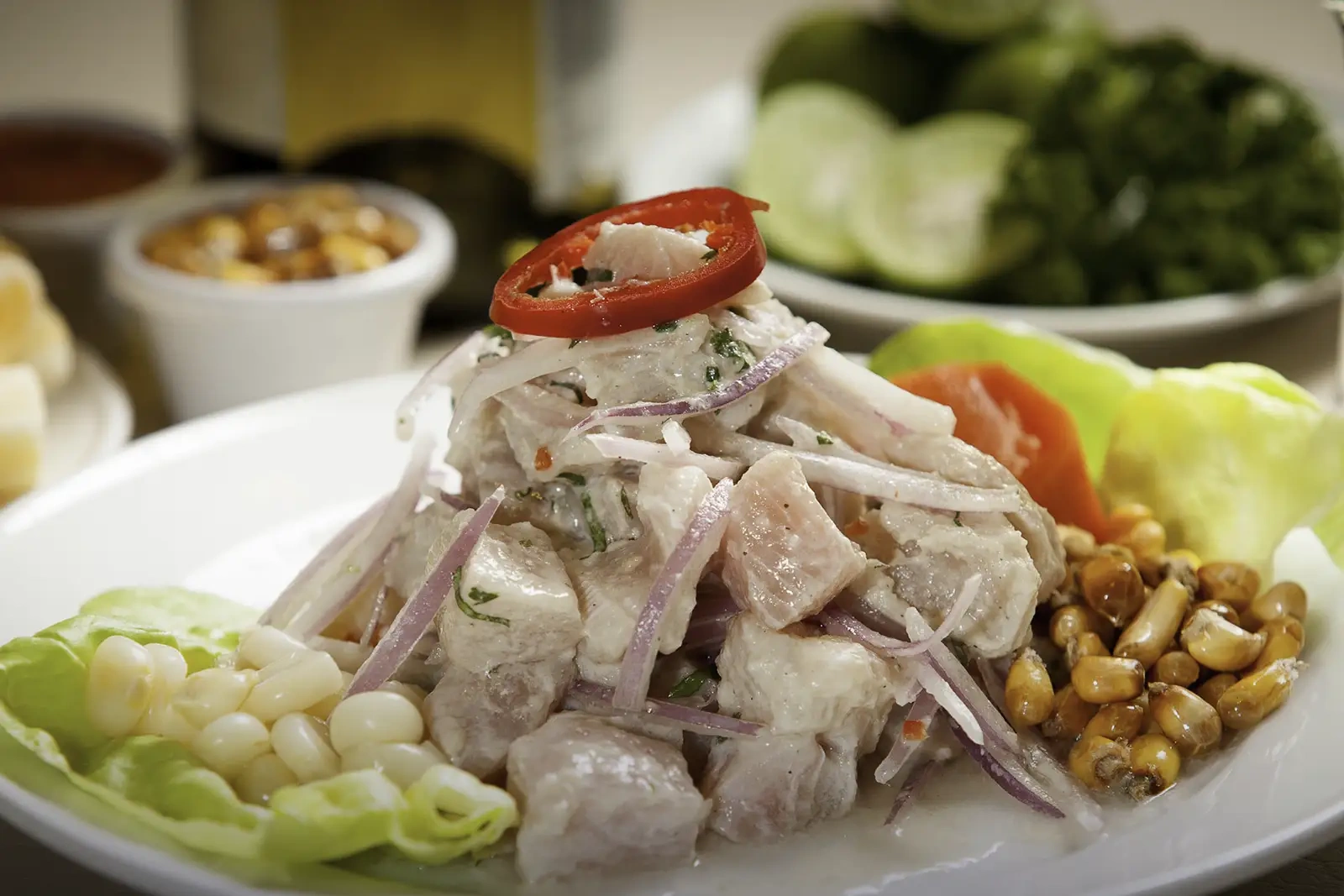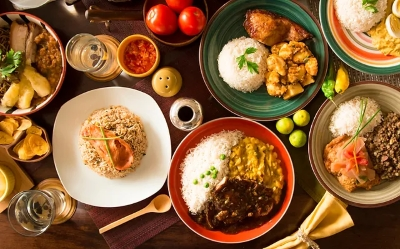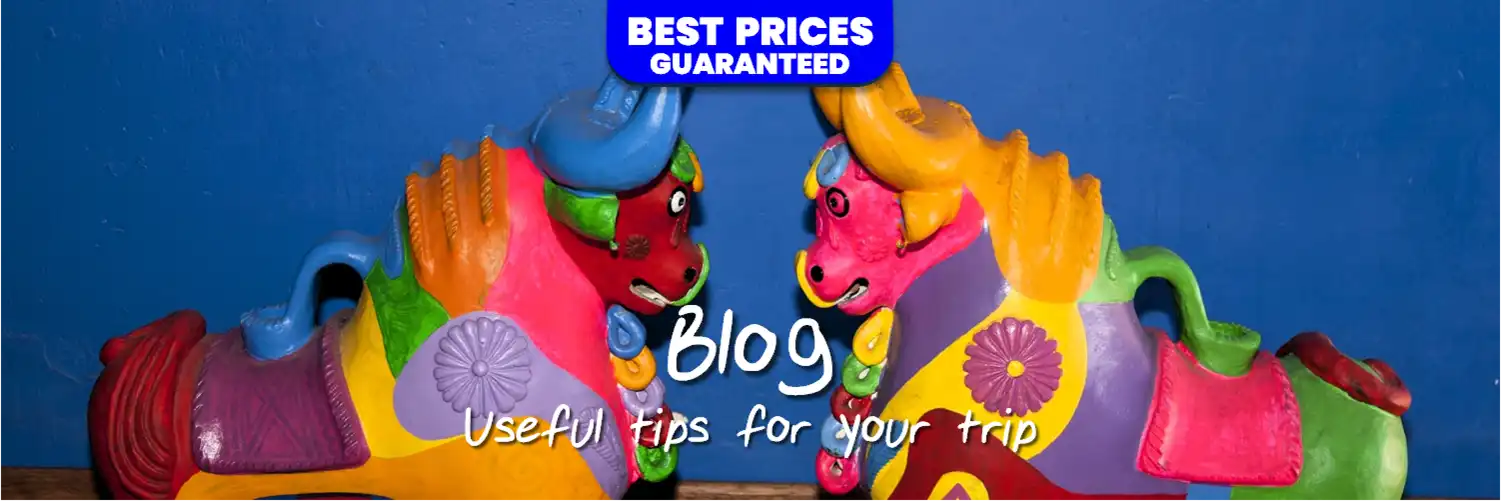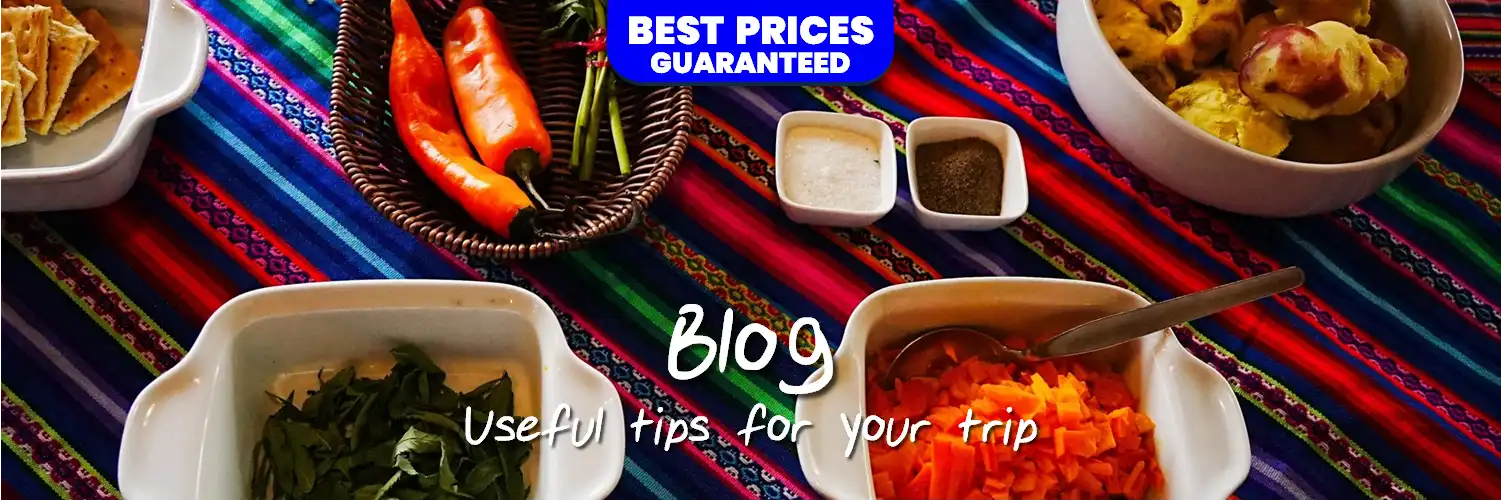The Origin of Peru’s Most Iconic Dishes: Stories Behind the Flavor

Peruvian cuisine doesn’t just captivate with its flavors — it tells stories. Every dish carries traces of migration, adaptation, and creativity. In Peru, names are never random: each one reveals something about history, language, and the cultural melting pot that shaped the country’s identity. Behind every word lies a piece of memory and meaning.
Here are the origins of Peru’s most iconic dishes — and the stories behind their names.
1. Ceviche: From the Andes to the Sea
Few dishes represent Peru like ceviche. Declared Intangible Cultural Heritage of Humanity by UNESCO, ceviche is one of the country’s greatest ambassadors. Yet its name has a long linguistic journey.
One of the most accepted theories is that the word comes from the Quechua “siwichi”, meaning fresh or tender fish. Over time, it blended with the Spanish word “escabeche” (from the Arabic sikbāj, a vinegar-marinated dish). Along Peru’s coast, this linguistic and culinary fusion gave birth to ceviche: fish marinated in lime juice, chili, salt, and red onion.
Its name mirrors its essence — a meeting of cultures from the Arab world to Spain, and finally to the Andes. Today, ceviche stands as a symbol of freshness, pride, and coastal identity.
2. Causa Limeña: A Patriotic Flavor
The story behind causa is one of solidarity and national pride. During the War of the Pacific (1879–1883), women in Lima prepared a cold potato-based dish seasoned with chili, lime, and salt, topped with chicken or tuna, and sold it to raise funds for Peruvian soldiers. Each sale was made “for the cause” — hence the name.
That phrase became inseparable from the dish. The causa limeña was born from female ingenuity and patriotism in times of crisis. Today, it’s served in restaurants across Peru and remains one of the country’s most beloved starters.
If you’re in Lima, try it near Miraflores — a neighborhood famous for its culinary variety and home to Pariwana Lima Hostel, a favorite stop among young travelers exploring Peruvian flavors.
3. Lomo Saltado: A Fusion on Fire
The lomo saltado perfectly captures Peru’s fusion cuisine. Its name combines Spanish and Chinese influences: lomo (loin or beef cut) and saltado (from the verb saltar, to jump or toss), referring to the quick stir-frying technique.
Chinese-Cantonese immigrants introduced this cooking style in the 19th century, adapting it with local ingredients — beef, onions, tomatoes, and fries cooked in a wok. The result: a dish that bridges cultures, served with rice and potatoes, symbolizing Peru’s blended heritage.
You can learn more about Peru’s culinary traditions through Peru.travel, the country’s official tourism site.
4. Tacu-Tacu: The Afro-Peruvian Echo of Resilience
Tacu-tacu is one of Peru’s most soulful dishes — hearty, humble, and born from necessity. The name comes from the Quechua verb “t'akuy”, meaning to mix one thing with another.
It originated among enslaved Africans on the coast during colonial times. Using leftovers of rice and beans from the day before, they created a new meal — crispy, filling, and delicious. It was a symbol of resourcefulness and resistance.
The name describes the essence of the dish: a mix, a reinvention. Over time, tacu-tacu evolved into a national favorite, often topped with steak, fried banana, and egg — a full celebration of Afro-Peruvian creativity.
5. Ají de Gallina: From the Viceroyalty to Today
The ají de gallina combines colonial history with local innovation. Its name means “chili of chicken,” but the story runs deeper. It evolved from the Spanish manjar blanco, a creamy chicken dish made with almonds served in royal courts. When this recipe arrived in Peru, locals replaced the almonds with walnuts, bread with potatoes, and added the vibrant yellow chili.
Thus, the dish — and its name — became uniquely Peruvian. It represents adaptation and cultural blend: European refinement meeting Andean earthiness.
6. Anticuchos: From Sacred Fire to Street Flavor
Few street foods are as iconic as anticuchos. The name comes from the Quechua “antikuchu”, combining anti (Andes or east) and kuchu (cut) — literally, Andean cut.
Their origins date back to the Inca Empire, when meat was grilled on skewers over hot coals. During the colonial period, enslaved Africans reinvented the recipe using beef heart, vinegar, and spices, creating a smoky, flavorful dish that became a national favorite.
As PromPerú notes, anticuchos are the perfect example of how indigenous and Afro-Peruvian traditions came together over open flames.
7. Carapulcra: The Potato Travels Through Time
Carapulcra is one of the oldest Peruvian dishes. Its name comes from the Quechua “qala phurk’a”, meaning a stew cooked with hot stones. It was originally prepared with dried potatoes and llama or pork meat.
Born in the Andes and later embraced on the coast, the dish shows how cultures intertwined. The name evolved over centuries from qala phurk’a to carapulcra, preserving its rustic essence. Thick, smoky, and rich, it’s living proof of how the potato remains central to Peru’s identity.
For a broader look at Peru’s culinary heritage, check out National Geographic’s travel guide.
8. Sopa Seca: Ica’s Delicious Paradox
The sopa seca (“dry soup”) is a traditional dish from Ica and Chincha, often served alongside carapulcra. The name is a playful contradiction — a soup that isn’t liquid.
In the 19th century, Afro-Peruvian cooks created it by simmering noodles in a flavorful sauce of chili, wine, and spices until the broth nearly evaporated. The result: a thick, aromatic pasta that pairs perfectly with its companion dish. Its name stuck as a humorous reminder of its unexpected texture.
A Language of Flavors
Each Peruvian dish is a living word — ceviche, causa, anticucho, tacu-tacu — each telling a story of fusion, struggle, and pride. The country’s cuisine can’t be understood by taste alone; its language reveals its soul. Every name is a chapter in the edible history of Peru.
To keep exploring Peruvian culture, food, and travel, visit the Pariwana Hostels Blog, where stories and flavors come together for travelers around the world.
✍️ Pariwana Editorial Team
Practical travel tips written by backpackers, for backpackers.

From ceviche to anticuchos: a foodie guide for backpackers in Peru


